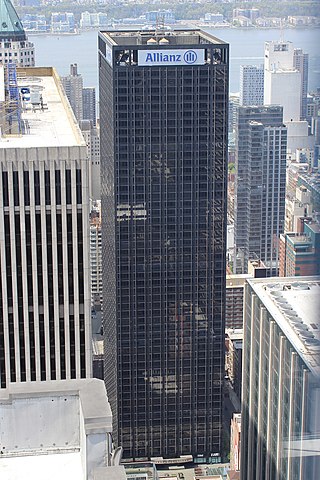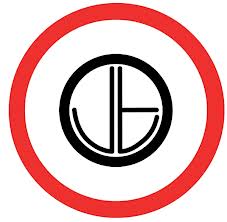Algorithmic trading is a method of executing orders using automated pre-programmed trading instructions accounting for variables such as time, price, and volume. This type of trading attempts to leverage the speed and computational resources of computers relative to human traders. In the twenty-first century, algorithmic trading has been gaining traction with both retail and institutional traders. A study in 2019 showed that around 92% of trading in the Forex market was performed by trading algorithms rather than humans.
An automated trading system (ATS), a subset of algorithmic trading, uses a computer program to create buy and sell orders and automatically submits the orders to a market center or exchange. The computer program will automatically generate orders based on predefined set of rules using a trading strategy which is based on technical analysis, advanced statistical and mathematical computations or input from other electronic sources.
In finance, a dark pool is a private forum for trading securities, derivatives, and other financial instruments. Liquidity on these markets is called dark pool liquidity. The bulk of dark pool trades represent large trades by financial institutions that are offered away from public exchanges like the New York Stock Exchange and the NASDAQ, so that such trades remain confidential and outside the purview of the general investing public. The fragmentation of electronic trading platforms has allowed dark pools to be created, and they are normally accessed through crossing networks or directly among market participants via private contractual arrangements. Generally, dark pools are not available to the public, but in some cases, they may be accessed indirectly by retail investors and traders via retail brokers.

In finance, an electronic trading platform also known as an online trading platform, is a computer software program that can be used to place orders for financial products over a network with a financial intermediary. Various financial products can be traded by the trading platform, over a communication network with a financial intermediary or directly between the participants or members of the trading platform. This includes products such as stocks, bonds, currencies, commodities, derivatives and others, with a financial intermediary such as brokers, market makers, Investment banks or stock exchanges. Such platforms allow electronic trading to be carried out by users from any location and are in contrast to traditional floor trading using open outcry and telephone-based trading. Sometimes the term trading platform is also used in reference to the trading software alone.
Tower Research Capital LLC is a high-frequency trading, algorithmic trading, and financial services firm.
High-frequency trading (HFT) is a type of algorithmic trading in finance characterized by high speeds, high turnover rates, and high order-to-trade ratios that leverages high-frequency financial data and electronic trading tools. While there is no single definition of HFT, among its key attributes are highly sophisticated algorithms, co-location, and very short-term investment horizons in trading securities. HFT uses proprietary trading strategies carried out by computers to move in and out of positions in seconds or fractions of a second.

Zero Hedge is a far-right libertarian financial blog and news aggregator. Zero Hedge is bearish in its investment outlook and analysis, often deriving from its adherence to the Austrian School of economics and credit cycles. It has been described as a financial "permabear".
Flash trading, otherwise known as a flash order, is a marketable order sent to a market center that is not quoting the industry's best price or that cannot fill that order in its entirety. The order is then flashed to recipients of the venue's proprietary data feed to see if any of those firms wants to take the other side of the order.

The May 6, 2010, flash crash, also known as the crash of 2:45 or simply the flash crash, was a United States trillion-dollar flash crash which started at 2:32 p.m. EDT and lasted for approximately 36 minutes.
Scott Patterson is an American financial journalist and bestselling author. He is a staff reporter at The Wall Street Journal and author of Dark Pools: High-Speed Traders, A.I. Bandits, and the Threat to the Global Financial System and The New York Times bestselling bookThe Quants.

Virtu Financial is an American company that provides financial services, trading products and market making services. Virtu provides product suite including offerings in execution, liquidity sourcing, analytics, broker-neutral, multi-dealer platforms in workflow technology and two-sided quotations and trades in equities, commodities, currencies, options, fixed income, and other securities on over 230 exchanges, markets, and dark pools. Virtu uses proprietary technology to trade large volumes of securities. The company went public on the Nasdaq in 2015.
Nanex is a Chicago-based firm that offers streaming market data services, and real-time analysis and visualization tools. They offer data on all market transactions to their clients who are typically traders and other financial analysis firms. "The company can analyse millions of trades per second."

Flash Boys: A Wall Street Revolt is a book by the American writer Michael Lewis, published by W. W. Norton & Company on March 31, 2014. The book is a non-fiction investigation into the phenomenon of high-frequency trading (HFT) in the US financial market, with the author interviewing and collecting the experiences of several individuals working on Wall Street. Lewis concludes that HFT is used as a method to front run orders placed by investors. He goes further to suggest that broad technological changes and unethical trading practices have transformed the U.S. stock market from "the world's most public, most democratic, financial market" into a "rigged" market.

Investors Exchange (IEX) is a stock exchange in the United States. It was founded in 2012 in order to mitigate the effects of high-frequency trading. IEX was launched as a national securities exchange in September 2016. On October 24, 2017, it received regulatory approval from the U.S. Securities and Exchange Commission (SEC) to list companies. IEX listed its first public company, Interactive Brokers, on October 5, 2018. The exchange said that companies would be able to list for free for the first five years, before a flat annual rate of $50,000. On September 23, 2019, it announced it was leaving its listing business.
Bradley Toshio Katsuyama is a Canadian financial services executive. He is the CEO and co-founder of the IEX, the Investors Exchange. He left RBC in 2012 to co-found IEX under the premise that it would be a fairer stock trading venue than other exchanges.
In finance, quote stuffing refers to a form of market manipulation employed by high-frequency traders (HFT) that involves quickly entering and withdrawing a large number of orders in an attempt to flood the market. This can create confusion in the market and trading opportunities for high-speed algorithmic traders. The term is relatively new to the financial market lexicon and was coined by Nanex in studies on HFT behavior during the 2010 Flash Crash.
Spoofing is a disruptive algorithmic trading activity employed by traders to outpace other market participants and to manipulate markets. Spoofers feign interest in trading futures, stocks, and other products in financial markets creating an illusion of the demand and supply of the traded asset. In an order driven market, spoofers post a relatively large number of limit orders on one side of the limit order book to make other market participants believe that there is pressure to sell or to buy the asset.

Jump Trading LLC is a proprietary trading firm with a focus on algorithmic and high-frequency trading strategies. The firm has over 700 employees in Chicago, New York, Austin, London, Tel Aviv, Singapore, Shanghai, Bristol, Gurgaon, Gandhinagar, Sydney, Amsterdam, Hong Kong, and Paris and is active in futures, options, cryptocurrency, and equities markets worldwide.

Citadel Securities LLC is an American market making firm headquartered in Miami. It is one of the largest market makers in the world, and is active in more than 50 countries. It is the largest designated market maker on the New York Stock Exchange.

DRW Holdings, LLC, typically referred to as DRW, is a proprietary trading firm based in Chicago. The firm was founded in 1992 by Don Wilson, an options trader at the Chicago Mercantile Exchange, and was named after his initials: DRW. The firm trades various financial instruments, including fixed income, options and derivatives, energy and agriculture, and cryptocurrency. DRW has offices in Amsterdam, Austin, Greenwich, Tel Aviv, Chicago, New York City, Houston, London, Montreal, and Singapore. DRW is one of the largest trading firms in the world.









